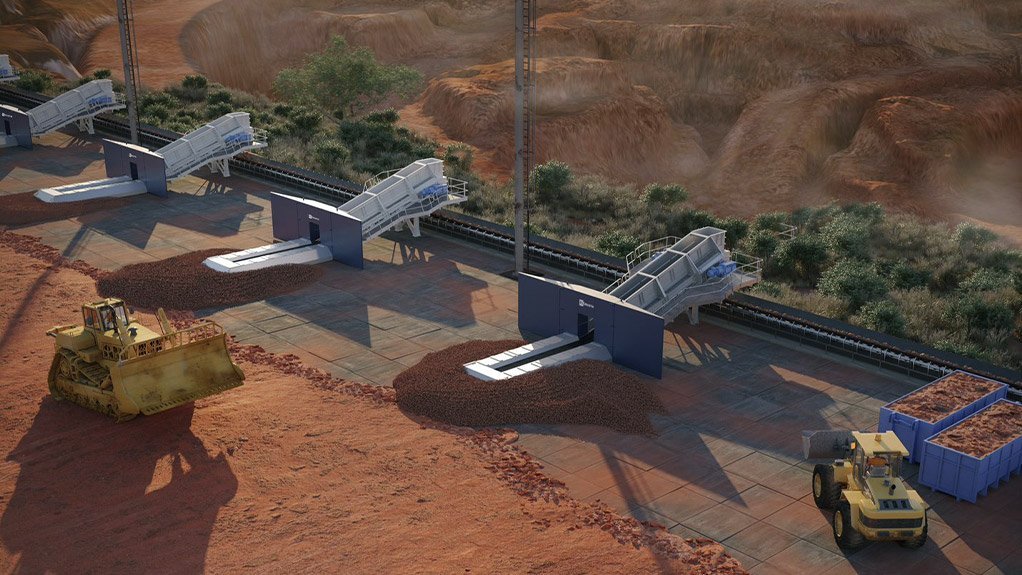
Durban-based nonwoven geotextiles manufacturer
Fibertex South Africa has responded to the construction industry’s request for
a protection geotextile that can provide even higher performance when
protecting the most important, vulnerable component of a lining system.
The latest upgrade at the company’s Hammarsdale
factory will certainly meet that call, not only for the local market but
international demand as well, says Fibertex South Africa CEO Clive Hitchcock.
Prompted by the global protection trend, the
significant upgrade of the company’s nonwoven line will enhance its ability to
produce products that were previously not available in South Africa, mitigating
imports, as well as create valuable export opportunities for the country, he
explains.
Subsequently, Fibertex South Africa expects some
valuable opportunities to be unlocked across a range of markets.
The value of using high-performing protection
geotextiles is being noted in the construction of lined landfills, tailings
storage dams and other facilities where ground water contamination is a
concern, owing to South Africa’s water scarcity, notes Hitchcock.
“There is, therefore, an increasing trend, in line
with global standards and norms, towards the specification of virgin
polypropylene geotextiles in these installations, as they offer superior chemical
resistance than previously available products.”
In addition, there is a greater focus on puncture
resistance and resistance to damage during installation, given the primary
objective of these protection geotextiles.
These demands support ongoing growth of some
specialised Fibertex protection geotextiles, despite overall geotextiles demand
being subdued, which is in line with the state of South Africa’s construction
industry.
However, with the large infrastructure projects
coming up for tender, Fibertex South Africa hopes these projects will be
awarded and started early in 2020.
As a global entity, Fibertex is involved with
institutions and technical organisations that are at the cutting edge of
construction technologies, specifically related to the use of geosynthetics in
enhancing the built environment.
“Fibertex South Africa is, therefore, in the ideal
position of having direct access to this information and know-how, and has had
the privilege of being able to share the latest information and technology with
South African engineers. As awareness grows, so does the realisation that these
technically advanced products can save money, lives and reputation,” highlights
Hitchcock.
Meanwhile, owing to the growing understanding of
how high performing geosynthetics can enhance the engineering of
infrastructure, Fibertex South Africa is experiencing solid growth in
neighbouring countries and throughout Africa.
He notes growing demand from East Africa, which is
driven by investments in infrastructure and improved knowledge on how to
combine geosynthetic technologies with conventional building methods to
increase performance, while reducing total project cost.
Although part of a multinational, Hitchcock
emphasises that Fibertex South Africa is committed to providing African
solutions for African problems. Therefore, the company has taken advantage of
combining the latest technologies, with local industry experience to provide
appropriate solutions.
The polypropylene for the company’s high-performing
geotextile range is locally produced, and then converted into fibre at Fibertex
South Africa’s plant, while the fibre for its recycled GTX range called
Betatex, is spun by local producers and sourced from various waste streams.
“The same fibre sources apply to our range of technical fabrics for the automotive, filtration, flooring, bedding and furniture industries. We also manufacture weldmesh gabions from locally drawn wire for a range of architectural and landscaping applications,” adds Hitchcock.http://www.engineeringnews.co.za/article/fibertex-south-africa-mitigating-imports-enhancing-export-potential-2019-12-06
More news
- CELEBRATING EXCELLENCE IN THE RESIDENTIAL PROPERTY SECTOR
- PART 4: GIBS PANEL DISCUSSES INTEMEDIATE CITIES ROLE IN AFRICA’S DEVELOPMENT
- EXPOSED AGGREGATE PAVERS COMPLEMENT NEW LIFESTYLE CENTRE
- GIBS PANEL EXPLORES ROLE OF INTERMEDIATE CITIES IN SA’S DEVELOPMENT PART 3
- CITI-CON’S CONCRETE KNOWLEDGE SUCCESSFULLY DEPLOYED ON NEW LANDMARK DEVELOPMENT

